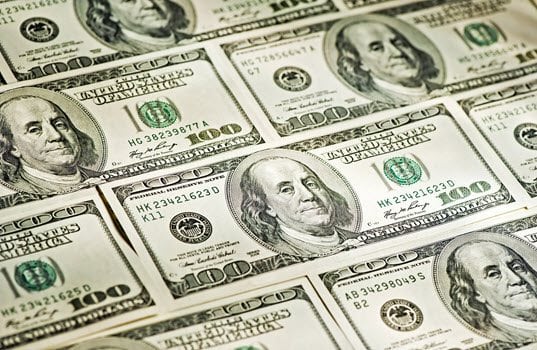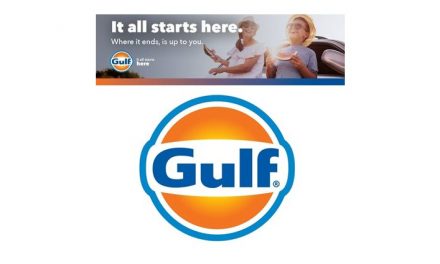By Chris Santy, President, Patriot Capital
Fuel jobbers are facing the potential of a large increase in capital investments over the next several years due to the EMV liability shift, updated EPA tank regulations and other site improvement initiatives. These investments impact both the marketers’ own sites as well as their dealer sites, and can represent investment of three or more times an average year’s capital spending.
In thinking about these investments, it’s important to step back and consider what options exist to pay for this equipment, and what trade-offs exist.
A company’s capital stack usually consists of four elements: cash on hand, senior lending lines of credit, equipment financing, and cash generated by portfolio optimization. While people often think about the cost of each of these options as being the interest rate paid, there is another, often greater cost – the opportunity cost of the profit that could be gained by using a resource in a different manner.
In considering financing options, it’s important to break out assets into strategic and tactical. Strategic use of capital includes buying land, existing c-stores, and competitors that are for sale. These investments are in assets that generally appreciate over time, provide the potential to make a profit from ongoing operations, plus offer additional profit when they are sold at a later date. Tactical uses of capital covers the costs of purchasing depreciating equipment. Although this type of equipment helps generate income, it has a defined life and generally depreciates over time.
“Focusing on a balanced capital stack generally enables owners to achieve higher valuations,” said John C. Flippen, Jr., of PetroCapRE.com
Here’s a simple example of what this could look like. Assume you had $100 and I offered to pay you 8 percent interest on this. In today’s low-interest-rate environment, you may think that’s a good deal and make the investment. If I then told you that you could invest in my new store and earn 20 percent, you may be inclined to make that investment. The incremental 12 percent that you would earn with the second investment is an example of the opportunity cost that exists in making financing decisions.
The Four Financing Options
Businesses should consider a range of trade-offs when weighing the benefits and costs of capital investment options. Financing involves striking the right balance on your balance sheet between borrowing cost, encumbrances on your business, and opportunity cost. Here are some factors to think about to obtain the best return on capital for your business.
Cash — Many businesses maintain a strong cash position; using cash on hand has the benefit of having no interest to pay, and investments can be made as fast as the need arises. The down-side of using cash-on-hand to fund capital investments is that once the cash is spent, it’s gone, and not available for strategic investments that might arise. Having cash on hand provides flexibility to invest in higher-return assets, such as additional sites or land that becomes available at an attractive price. If you are investing cash in equipment installed on a dealer’s site, equipment ownership could be in question in the case of a dispute. The old adage “cash is king” is worth heeding in considering the trade-off of using cash for depreciating equipment investments.
Bank Lines Of Credit — While accessing a bank line of credit to fund capital investments could be a relatively low-cost method of capitalization, it results in borrowing against appreciating strategic assets to fund depreciating tactical equipment. If a line of credit is collateralized by real estate or other assets, this type of financing could sub-optimize your ability to borrow for strategic purposes. Simply put, once an asset is pledged as security, it is very hard to borrow additional funds against it. Generally, lines of credit have variable interest rates, introducing risk to your long-term borrowing costs.
Specialized Equipment Financing — Although the interest rate to finance EMV gas pumps or a storage tank upgrade may be slightly higher than a bank loan, equipment financing offers a fixed interest rate and no additional collateral requirements. Typically, equipment financing is fast and efficient. Funding can cover both equipment and installation costs, things that other forms of financing may not fully fund. Because the equipment is used as collateral, there are no liens on land or other assets, preserving capital and real estate for strategic growth investments.
Asset Portfolio Review — Many business owners are remiss in regularly reviewing their portfolio of assets to identify and cull underperformers. One way to attack this is to develop a specific plan and timetable for reviewing each site’s performance and reviewing the bottom performing 10 percent of your assets once each quarter. If a particular site still is underperforming after an improvement plan has been implemented, or a site is determined to be undeserving of an improvement plan, it may be time to divest to obtain capital for investment in better-performing assets.
“Actively discussing capital structure, and not just profit, is a trait we see from our top performers,” reports Jed Brewer, Vice President, Study Groups.
It’s also a good idea for a jobber with “all their eggs in one basket” to consider diversifying investments in different types of businesses, such as hotels, motels or self-storage units, or to expand to another geographic region. This portfolio approach to asset management optimizes risk through diversity in assets.
Finally, one thing that often is overlooked is the value of management time; consider whether multiple hours spent trying to fix an underperforming site might be better used working on opportunities offered by better-performing locations. This is another example of ensuring you consider opportunity cost in your activities.
Find The Right Mix Of Growth Investment And Return
A key metric for shareholders is return on invested capital, or ROIC. That’s why Fortune 500 companies borrow – to strike the right mix of growth investment and return. For example, an ROI of 10 percent is achieved through the purchase of one convenience store for $1 million that earns $100,000 a year. Twice as much income can be generated by investing $1 million cash and borrowing $1 million to purchase two stores. When each store generates $100,000 a year, the ROI increases to 20 percent. Even when considering interest, the ROI will still be almost double that of a single store purchased with cash.
To Borrow or Not To Borrow?
The National Association of Convenience Stores (NACS) State of the Industry analysis reports that the convenience store industry has an ROIC of around 15 percent. Using this as a base marker, investors need to consider that spending less than 15 percent in interest and fees to obtain capital financing will result in a net gain in ROIC. Considering this data, how high is the opportunity cost of spending cash on hand that could be spent on an investment with higher ROIC?
Bottom Line: Good Financial Balance is Essential
A well-thought-out capital investment strategy involves trade-offs between cash, senior bank borrowing, equipment financing and asset management. All four of these considerations need to be addressed to maximize a company’s ROIC, and paying cash may not always be the best option.
 Chris Santy, President of Patriot Capital, powered by State Bank & Trust Company, has more than 15 years of equipment finance and leasing experience focused solely on the Retail and Commercial Petroleum industry. Patriot Capital Corp. is recognized as the ‘Best in US’ in equipment financing by Petroleum Marketers Association of America (PMAA).
Chris Santy, President of Patriot Capital, powered by State Bank & Trust Company, has more than 15 years of equipment finance and leasing experience focused solely on the Retail and Commercial Petroleum industry. Patriot Capital Corp. is recognized as the ‘Best in US’ in equipment financing by Petroleum Marketers Association of America (PMAA).








